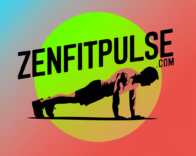Alex stared at his computer screen, the familiar tension creeping up his neck as another deadline loomed. His thoughts scattered like leaves in the wind, making focus impossible. It wasn’t until a chance encounter with a former athlete-turned-breathwork coach that everything changed. “Your breath is the remote control to your nervous system,” the coach had told him. Three weeks of dedicated breathwork practice later, Alex found himself handling pressure with newfound clarity and calm. According to the Global Wellness Institute, he’s not alone — breathwork adoption has surged by 40% since 2021, with millions discovering how intentional breathing can transform mental states and accelerate recovery.
The Science Behind Breathwork Techniques
Breathwork isn’t just another wellness trend — it’s a physiological key that unlocks your body’s innate recovery mechanisms. When you engage in specific breathwork techniques, you’re essentially hacking your autonomic nervous system, shifting from the stress-inducing sympathetic state (fight-or-flight) to the restorative parasympathetic state (rest-and-digest).
A 2022 study published in the Journal of Neurophysiology found that controlled breathing patterns can reduce cortisol levels by up to 23% within just 20 minutes. Even more fascinating, researchers at Stanford University discovered that certain breathwork techniques can increase alpha wave activity in the brain — the same brain state associated with deep creativity and mental clarity.
What makes breathwork particularly powerful is how it serves as a bridge between conscious control and unconscious bodily functions. Dr. Andrew Huberman, neuroscientist at Stanford, explains: “Breathing is unique because it’s both automatic and voluntary. This dual nature allows us to use breath as a lever to influence systems we normally can’t control, like heart rate, blood pressure, and even immune function.”
5 Uncommon Breathwork Techniques for Mental Clarity
While basic deep breathing has its place, these lesser-known techniques offer more targeted benefits for mental clarity and cognitive recovery. Each technique creates a specific physiological response that can be applied to different situations in your day.

1. The Physiological Sigh
This technique, popularized by Dr. Andrew Huberman, mimics the body’s natural stress-relief mechanism. Unlike common breathwork techniques, the physiological sigh involves a double inhale followed by a prolonged exhale.
“The physiological sigh is the fastest way to reduce stress in real-time. It works by inflating the alveoli in your lungs that have collapsed under stress, rapidly eliminating carbon dioxide and calming your nervous system.” — Dr. Andrew Huberman, Stanford Neuroscientist
How to perform it: Take a normal inhale through your nose, immediately followed by a second shorter inhale to fill your lungs completely. Then exhale slowly through your mouth. Repeat 2-3 times when you need immediate mental clarity.

2. Coherent Breathing (5.5 Rhythm)
This precise breathing pattern has been shown to optimize heart rate variability (HRV), a key marker of cognitive flexibility and stress resilience. A 2021 study in the Journal of Alternative and Complementary Medicine found that just 10 minutes of coherent breathing improved executive function test scores by 18%.
How to perform it: Breathe in for 5.5 seconds and out for 5.5 seconds (about 5-6 breaths per minute). This specific rhythm synchronizes your heart rate, blood pressure, and brain waves into a coherent pattern. Practice for 5-10 minutes daily for cumulative benefits.

3. Breath Retention After Exhale
This advanced technique leverages controlled hypoxia (temporary oxygen reduction) to trigger neurological adaptations. Research from the Karolinska Institute shows that this practice increases brain-derived neurotrophic factor (BDNF), often called “fertilizer for the brain,” supporting cognitive recovery and neuroplasticity.
How to perform it: After a normal exhale, hold your breath comfortably for 10-15 seconds before inhaling again. Start with 3-5 repetitions and gradually increase. This technique should create mild air hunger but never extreme discomfort.

4. Alternate Nostril Breathing with Cognitive Task
This technique combines the traditional yogic practice of alternate nostril breathing with simultaneous cognitive engagement. A 2023 study in Frontiers in Human Neuroscience found that this combination enhanced interhemispheric brain communication and improved cognitive performance more effectively than either practice alone.
How to perform it: Use your right thumb to close your right nostril, inhale through your left nostril. Then close your left nostril with your ring finger, open your right nostril, and exhale. Continue this alternating pattern while simultaneously counting backward from 100 by 7s (or another simple cognitive task).

5. 4-7-8-4 Box Breathing Variation
This modified version of box breathing creates an asymmetrical pattern that research suggests may be more effective for cognitive enhancement than traditional equal-sided box breathing. The extended exhale phase activates the vagus nerve more intensely, while the added retention phase after exhale creates a mild hormetic stress that strengthens mental resilience.
How to perform it: Inhale for 4 seconds, hold for 7 seconds, exhale for 8 seconds, and hold the empty lungs for 4 seconds before beginning again. Complete 4 cycles when preparing for cognitively demanding tasks.
3 Breathwork Techniques for Accelerated Recovery
Physical and mental recovery share many of the same physiological pathways. These specialized breathwork techniques target recovery mechanisms that help both body and mind reset more efficiently.

1. Extended Exhale Ratio Breathing
This technique emphasizes longer exhalations, which research from the University of California shows can reduce inflammatory markers and accelerate recovery. A 2022 study found that athletes using extended exhale breathing had 31% faster heart rate recovery after intense exercise compared to control groups.
How to perform it: Breathe in for 4 seconds, then exhale slowly for 8 seconds. The key is maintaining a 1:2 inhale-to-exhale ratio. Practice for 5 minutes after workouts or mentally taxing activities.

2. Diaphragmatic Oscillation
This lesser-known technique involves creating gentle pulsations with your diaphragm during normal breathing. Research published in the International Journal of Sports Physiology and Performance demonstrates that this method enhances lymphatic circulation and accelerates the clearance of metabolic waste products after exertion.
How to perform it: While breathing normally, create small, rapid contractions of your diaphragm (like gentle panting) overlaid on your regular breath rhythm. Aim for 3-5 pulsations per second for 2-3 minutes while lying down.

3. Humming Exhale
This technique leverages sound vibration to stimulate the vagus nerve and trigger parasympathetic activation. A study from the National Institute of Mental Health and Neurosciences found that humming exhalations increased nitric oxide production in the sinuses by up to 15-fold, enhancing oxygen uptake and accelerating recovery.
How to perform it: Inhale normally through your nose, then exhale while making a humming sound (like the sound “hmmmm”). Feel the vibration in your chest, throat, and face. Continue for 10-20 breaths when you need to accelerate recovery.
At ZenFitPulse.com, we’ve compiled hundreds of evidence-based articles on breathwork techniques like these, with personalized recommendations based on your specific recovery needs and cognitive goals. Our approach combines ancestral wisdom with cutting-edge research to deliver uncommon but highly effective practices.
Implementing Breathwork in Your Daily Routine

The key to making breathwork effective isn’t just knowing the techniques—it’s strategically implementing them at the right moments in your day. Here’s how to match specific breathwork techniques to your body’s natural rhythms and daily challenges:
Morning Clarity Protocol
When: Within 30 minutes of waking
Technique: Start with 3 rounds of Physiological Sighs, followed by 5 minutes of 4-7-8-4 Box Breathing
Why it works: This combination resets sleep-induced CO2 buildup and primes your prefrontal cortex for clearer thinking throughout the morning.
Pre-Performance Preparation
When: 15 minutes before important meetings or tasks
Technique: 3 minutes of Coherent Breathing (5.5 rhythm)
Why it works: Synchronizes heart rate variability and neural oscillations, optimizing cognitive performance and emotional regulation.
Mid-Day Reset
When: After lunch or during afternoon energy dips
Technique: 2 minutes of Alternate Nostril Breathing with Cognitive Task
Why it works: Rebalances hemispheric brain activity and counteracts post-meal cognitive decline.
Recovery Acceleration
When: Post-workout or after mentally taxing work
Technique: 5 minutes of Extended Exhale Ratio Breathing followed by 2 minutes of Humming Exhale
Why it works: Rapidly shifts from sympathetic to parasympathetic dominance, initiating recovery processes.
Pro Tip: Track your HRV (heart rate variability) before and after breathwork sessions to quantify your nervous system response. Many wearable devices now offer this feature, providing objective feedback on which techniques work best for your unique physiology.
Common Mistakes to Avoid with Breathwork Techniques

Forcing Instead of Allowing
Many beginners approach breathwork with too much effort, creating tension that counteracts the benefits. Effective breathwork should feel like guiding your breath rather than controlling it. Allow your breathing to find its natural rhythm within the technique’s framework.
Inconsistent Practice
Research from the Center for Mindfulness shows that sporadic breathwork yields minimal benefits compared to consistent practice. Even 3-5 minutes daily creates more significant nervous system adaptations than 30 minutes once a week.
Ignoring Physiological Feedback
Your body provides constant feedback during breathwork. Dizziness, tension, or strain indicates you should modify the technique. Effective breathwork should feel challenging but sustainable and ultimately leave you feeling more balanced.
One-Size-Fits-All Approach
Different physiologies respond uniquely to various techniques. What works for someone else might not be optimal for you. Experiment with different approaches and observe your responses to develop a personalized breathwork toolkit.
Measuring Your Breathwork Progress
How do you know if your breathwork practice is actually working? Beyond subjective feelings, these objective measurements can help you track your progress:
Heart Rate Variability (HRV)
HRV is the variation in time between heartbeats and serves as a window into your autonomic nervous system balance. Higher HRV generally indicates better stress resilience and recovery capacity. Many wearable devices now track this metric, making it accessible for daily monitoring.
Recovery Rate
Measure how quickly your heart rate returns to baseline after physical or mental exertion. Effective breathwork practices should progressively improve this recovery rate, allowing you to bounce back faster from stressors.
Cognitive Performance
Use simple cognitive tests (like dual n-back or Stroop tests available as smartphone apps) to measure attention, working memory, and processing speed before and after breathwork sessions. Track these scores over time to quantify cognitive improvements.
Get Personalized Breathwork Guidance
Discover which breathwork techniques work best for your unique physiology and goals with our evidence-based resources and personalized recommendations.
Conclusion: The Breath as Your Neural Remote Control

The breath truly is the remote control to your nervous system—a tool that’s always available, completely free, and remarkably powerful when used with precision and consistency. The uncommon breathwork techniques we’ve explored offer targeted approaches to enhance mental clarity and accelerate recovery in ways that generic deep breathing simply cannot match.
What makes these techniques particularly valuable is their adaptability to different contexts and needs. Whether you’re preparing for a high-stakes presentation, recovering from intense physical training, or simply navigating the cognitive demands of modern life, there’s a breathwork approach specifically designed to optimize your physiological state.
Remember that breathwork is both an art and a science—requiring both technical precision and intuitive awareness. As you incorporate these practices into your daily routine, pay attention to how your unique system responds and adjust accordingly. What if just 5 minutes of intentional breathing today could reset your entire week?
Discover more from zenfitpulse
Subscribe to get the latest posts sent to your email.

